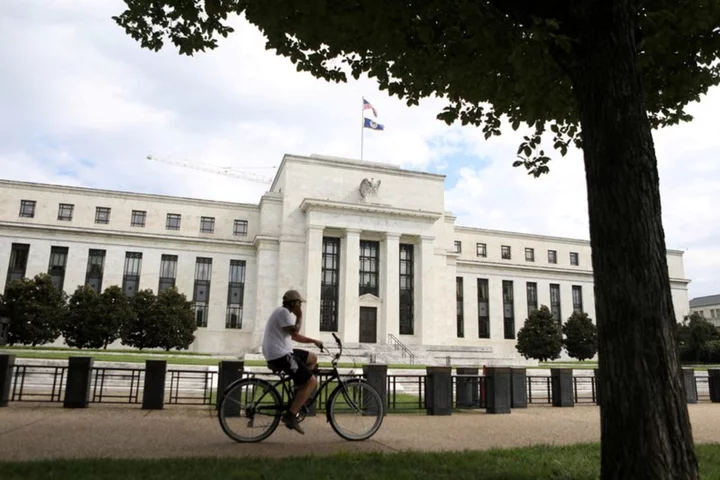By Howard Schneider
WASHINGTON Confident the Federal Reserve will leave interest rates unchanged, investors are far more focused on the release of new forecasts on Wednesday that will reveal how much U.S. central bank policymakers buy into the prospect of an economic "soft landing" and what rate environment will prevail alongside it.
In the near term, Fed officials are expected to still project one more rate hike before the end of 2023, likely to be delivered at their Oct. 31-Nov. 1 meeting.
But beyond that, the release of the updated Summary of Economic Projections will force Fed policymakers to show if they believe a recent run of good data can continue - with inflation slowing alongside stronger-than-anticipated job and economic growth - or whether even more restrictive monetary policy will be needed to finish the fight against rising prices despite the risks that brings of a hard stop to the post-pandemic economic expansion.
Policymakers' projections are "likely to undergo meaningful revisions ... including upgrades to growth and the labor market and a downward revision to inflation, at least in 2023," wrote Matthew Luzzetti, chief U.S. economist at Deutsche Bank, who expects the main body of Fed officials to still project one more rate hike this year.
Should it occur, that next rate increase may indeed be the last of a tightening cycle that began in March 2022, but projections for next year and beyond will indicate how long the period of high interest rates is expected to be, how fast inflation returns to target, and how much the economy slows and unemployment rises along the way.
The new projections and the Fed's latest policy statement will be released at 2 p.m. EDT (1800 GMT). Fed Chair Jerome Powell is scheduled to hold a press conference half an hour later.
As of the last set of quarterly projections, published in June, the median Fed policymaker end-year projection was for economic growth of 1.0%, underlying inflation of 3.9%, and the benchmark overnight interest rate to be in the 5.50%-5.75% range, just a quarter of a percentage point above the range approved at the last meeting in July.
POSSIBLE BUT NOT PROBABLE
The June projections showed that economic growth was expected to remain around 1% next year, with underlying inflation falling to 2.6% by the end of 2024 and to 2.2% by the end of 2025 - within striking distance of the Fed's 2% target.
With inflation slowing, that would allow interest rates to decline also. The last set of projections envisioned that the Fed's policy rate would fall by a percentage point in 2024, and by 1.2 percentage points in 2025 to end that year in the 3.25%-3.50% range.
How much those values shift, particularly around the rate cuts envisioned next year, and what the first glimpse of 2026 says about the longer-run outlook, will amount to a tacit vote on whether the Fed's faith in the soft landing, a scenario in which inflation falls without major job losses or a recession, has grown stronger because of the economy's resilience, or weaker because of concern that price pressures might persist and force an even tighter policy stance.
Data since the Fed's July meeting could support either argument, with recent releases often sending mixed messages. A homebuilder survey released on Monday, for example, revealed a souring in sentiment in September. A Commerce Department report on Tuesday showed housing starts fell 11.3% in August, while new permits, a leading indicator for future investment, jumped a healthy 6.9%. Recent data on prices showed inflation picking up speed, but for reasons, such as high energy costs, that will likely fade, and the pace of trend inflation still moderating.
But Powell and other Fed officials have said that for them to feel confident in a broad "disinflation," the economy will have to operate below its potential for a period of time.
It hasn't happened so far, with economic growth through the first half of the year above the 1.8% rate that Fed officials view as the economy's non-inflationary trend, and continuing that way through the third quarter.
That likely means a markup for the economy in the coming projections, and possibly a drift towards tighter monetary policy as well, said Joseph Davis, global chief economist at Vanguard and head of the fund giant's investment strategy group.
Given how the economy is behaving, the Fed "may need to raise rates further (or) need to hold policy tighter for longer" in order to slow the economy, Davis said, adding that a "soft landing is still possible, but not probable."
(Reporting by Howard Schneider; Editing by Paul Simao)

